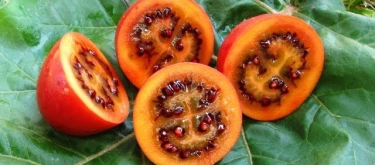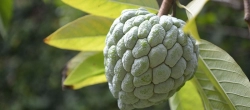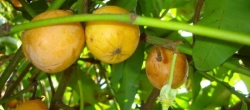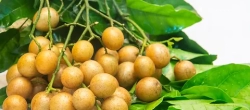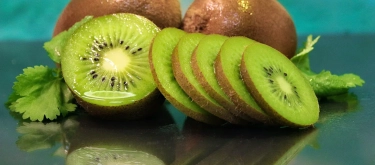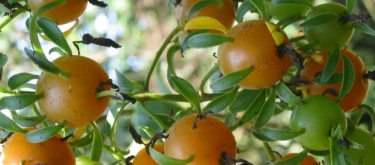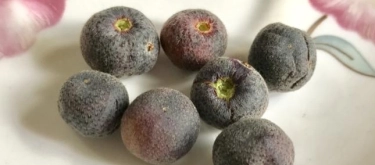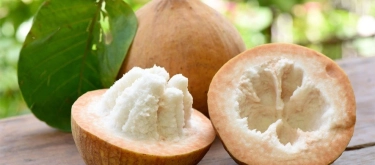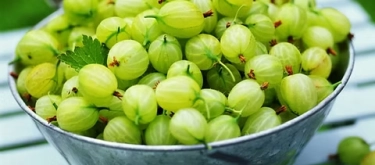Physalis: Taste Profile, Aroma, Benefits and Health Risks
Physalis, commonly known as ground cherry, cape gooseberry, or golden berry, is a small, bright orange fruit encased in a delicate papery husk. Native to the Americas, it has gained culinary and medicinal significance worldwide. Known for its balance of sweet and tart flavors, physalis is used in fresh and dried forms in both sweet and savory dishes. Beyond its taste, physalis is rich in bioactive compounds, making it a functional food with potential health benefits.
Physalis is generally safe for consumption but belongs to the nightshade family (Solanaceae), which may cause allergic reactions in sensitive individuals. Unripe physalis contains toxic alkaloids, making it unsafe to eat before full ripening.
What does Physalis taste like?
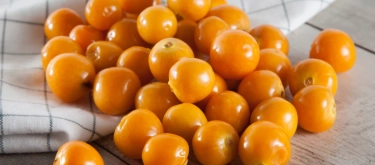
Complete Sensory Description
Taste
Physalis has a unique flavor profile combining sweetness with a distinct tartness. The taste is often compared to a blend of tropical fruits, with notes of pineapple, mango, and citrus, complemented by mild tomato-like undertones. When fully ripe, the sweetness is more pronounced, with a slight hint of caramelized sugar.
Aroma
The aroma of physalis is delicate yet fruity, with mild floral and citrus notes. When the husk is peeled back, it releases a fresh, slightly tangy scent reminiscent of tropical fruits and tomatoes.
Texture
Physalis has a smooth, firm, and juicy texture. The flesh is slightly gelatinous, enclosing numerous tiny, edible seeds that provide a subtle crunch. The balance of juiciness and crunch makes it a refreshing fruit.
Appearance
Physalis is small, round, and bright orange to golden-yellow in color, typically 1.5–2 cm in diameter. It is enclosed in a thin, papery husk that resembles a lantern, turning from green to a beige-brown as the fruit ripens.
In-depth Flavor Analysis
The characteristic taste of physalis is driven by organic acids such as citric and malic acid, responsible for its tartness. The presence of fructose and glucose contributes to its natural sweetness. Volatile compounds like esters and aldehydes give it its fruity and slightly floral aroma. The mild umami undertones, similar to tomatoes, come from amino acids and carotenoids. As the fruit ripens, enzymatic processes enhance the sweetness while reducing acidity, shifting the overall flavor profile toward a more balanced taste.
Varieties and Culinary Applications
Physalis includes several edible species, with Physalis peruviana (cape gooseberry) and Physalis ixocarpa (tomatillo) being the most well-known. The culinary uses of physalis include:
- Fresh consumption – eaten raw as a snack or in fruit salads.
- Jams and preserves – cooked with sugar to create sweet spreads.
- Desserts – used in tarts, sorbets, and chocolate-coated treats.
- Savory dishes – complements meats, seafood, and cheese platters.
- Salsas and sauces – tomatillo (a green variety of physalis) is essential in Mexican cuisine for making green salsa.
- Juices and beverages – added to smoothies and cocktails for a tropical twist.
Selection and Storage
When choosing physalis, look for firm, plump fruits with intact husks. The husk should be dry and papery, not damp or moldy. Ripe physalis is bright orange or golden-yellow and should give slightly under gentle pressure. Store fresh physalis in a cool, dry place with its husk intact for up to two weeks. Refrigeration can extend its shelf life, but it should be kept in a breathable container to prevent moisture buildup.
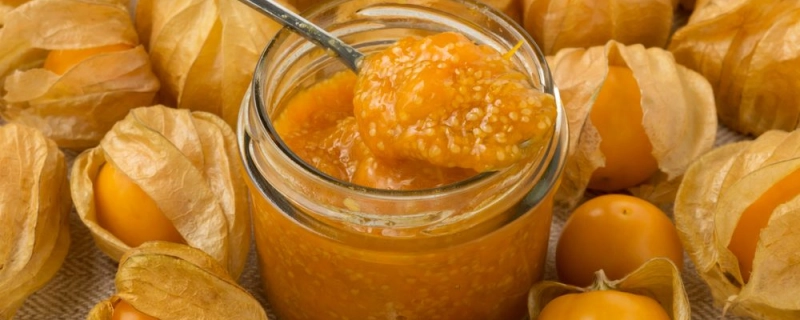
Nutritional Insights
Physalis is a nutrient-rich fruit, offering:
- Vitamin C – supports immune function and skin health.
- Vitamin A (beta-carotene) – promotes eye health and antioxidant protection.
- B vitamins (B1, B3, B6) – aid in energy metabolism.
- Iron and phosphorus – essential for blood health and bone strength.
- Antioxidants (withanolides, flavonoids) – have potential anti-inflammatory and immune-boosting properties.
Expert Insights & Culinary Tips
- To enhance sweetness, allow physalis to ripen fully before eating.
- Roasting tomatillos before blending them into sauces intensifies their flavor.
- Physalis pairs well with honey, citrus, dark chocolate, and aromatic cheeses.
- The fruit can be dried like raisins for a chewy, naturally sweet snack.
Interesting and Curious Facts
- Physalis belongs to the same family as tomatoes, eggplants, and potatoes.
- The papery husk protects the fruit from pests and extends its shelf life.
- Some species, like tomatillos, are key ingredients in traditional Latin American cuisine.
- In South America, physalis has been used in folk medicine for its supposed anti-inflammatory properties.
Harm and Dietary Considerations
- Toxicity of unripe fruit – Unripe physalis contains solanine, a toxic compound that can cause digestive issues. Always consume fully ripe fruit.
- Allergic reactions – Individuals sensitive to nightshade plants may experience mild allergic symptoms.
- Excessive consumption – Eating large amounts may lead to digestive discomfort due to its high fiber and acidity content.
Religious Dietary Considerations
Physalis is widely accepted in religious dietary laws, including Hinduism, Islam, and Buddhism. There are no known restrictions on its consumption in major religious traditions.
Final Thoughts & Sensory Journey
Physalis is a unique fruit that balances sweet and tart flavors, making it a versatile ingredient in both fresh and cooked forms. Its rich nutritional profile and culinary adaptability make it a valuable addition to a healthy diet. From fresh snacking to gourmet dishes, the vibrant acidity and tropical aroma of physalis offer a distinctive and enjoyable sensory experience.
Resources
- Journal of Food Science – Analysis of nutritional and bioactive compounds in physalis.
- Handbook of Tropical Fruits – Culinary applications and storage recommendations.
- Traditional Medicine Research – Ethnobotanical significance of physalis species.
